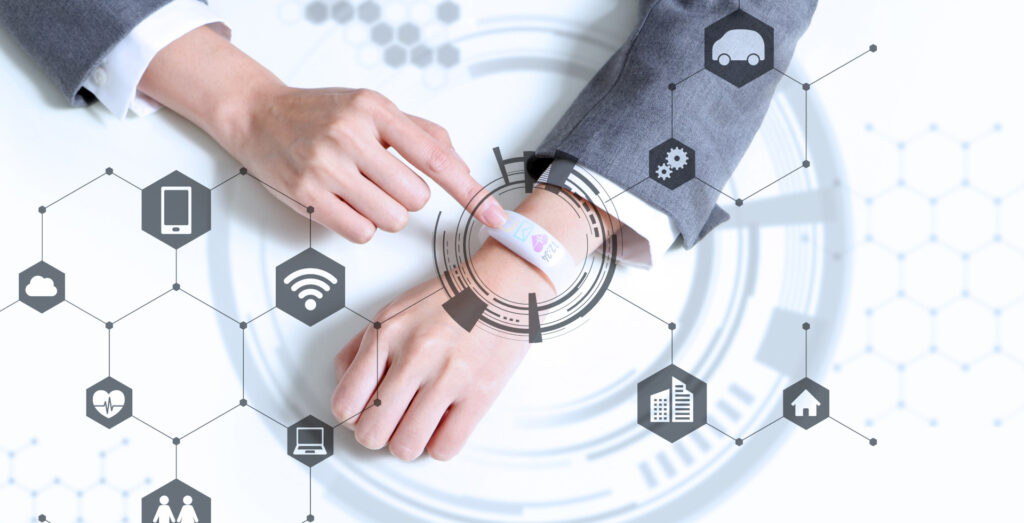Back to the Future II, a movie released in 1989, predicted today’s wearable tech. Not only did they get wearable computing right, but they also even included devices that look like a mix of Google Glass and the Oculus Rift virtual reality headset.
Three decades have passed since the movie was released, and now we can confidently say that we have taken giant strides as a civilization and turned something that was science-fiction in a not-so-distant past into reality; wearable technology.
Wearables are small electronic and mobile devices or computers with wireless communication capabilities incorporated into gadgets, accessories, or clothes, which can be worn on the human body. Some of the most common wearable devices are smart glasses and smartwatches.

Aside from being fashionable and equipped with advanced hardware technologies such as communication modules and networking, wearable devices have the potential to fuel artificial intelligence (AI) methods with a wide range of valuable data.
Wearable devices find their use in many cases, such as data collection in daily activities, sports performance, and health monitoring. There are different types of wearables such as smartwatches, hearing aids, electronic tattoos, wristbands, subcutaneous sensors, head-mounted displays, electronic textiles, and footwear.
Applications
1.) Sports
Wearables are effective in sports. Basketball Replay Analyser by Blast Motion records the actions of basketball players and provides them with performance metrics to improve their performance.
Injury prevention is critical in any sport, and wearable devices may be used to avoid potential injuries while players enjoy their favorite sports. Chen et al. developed a fuzzy logic inference system that receives data such as temperature, humidity, etc., from wearable devices and determines the wearer’s heat stroke possibility and the wearer can be alerted in time. Skazalski et al. used commercially available wearable devices to monitor volleyball players’ functional movements, heart rate, and workloads. The collected data maximizes the players’ performance and minimizes possible injuries.
2.) Healthcare
Wearable devices have a lot of potential to provide mobile healthcare services. Different types of wearables like smartwatches, on-body cameras, masks, and E-patches have been developed for healthcare applications. The most common type of data measured by wearable for healthcare purposes includes heart rate, blood pressure, body temperature, blood oxygen saturation, posture, and physical activities.

3.) Industrial and Manufacturing
As industrial infrastructures evolve, performing the desired tasks efficiently, accurately, and quickly is highly desirable. With sufficient research and development, wearable devices have the potential to revolutionize the modern industry. The machines will take the humans’ place doing repetitive and routine tasks. However, the absolute removal of human supervision is not likely in cases where human’s experience is required. Currently, wearables have gained a considerable share of the consumer market.
4.) Human-Robot Interaction
Human-robot interaction (HRI) establishes efficient, safe, and comfortable interactions between humans and robots. The exchange usually takes place via a wearable medium. With the development of collaborative robots in manufacturing, physical interactions between humans and robots pave a new way to perform tasks collaboratively. Most studies focused on robot motion planning and control during chore execution. However, human physical and psychological status is essential for effective task distribution and allocation. Therefore, wearables are intended to recognize the human mental state and physical activities. Subsequently, a robot could effectively and naturally perform the given task with the human. Besides, the collected data through wearable enables online classification of human intentions and activities; therefore, robots can actively adapt to ensure human safety while delivering the required task.

Future Possibilities
- A near guarantee for wearable technology is advancements in longer battery life. Wearing a watch that you must constantly take off to charge is frustrating. The future of these devices may incorporate Energy Harvesting— a method of converting body heat, movement, or solar energy into raw power.
- The next big thing for a wearable is to integrate deeper into the Smart Home Ecosystem, like controlling your Door lock from your watch, locating a user, customizing home/ room settings based on the user’s wearable, and so on.
- We will see wearables advance in Health Parameter Monitoring and the entire ecosystem around it.
- The Augmented Reality (AR) and Virtual Reality (VR) segments would also greatly develop.
- Newer designs like rings might get slowly picked up by various wearable manufacturers.

Conclusion
The future is ever-changing, and some predictions might seem mute in a few years, but it’s safe to say that wearable technology is a popular and viable medium for a wide range of applications. There’s a lot of untapped potentials ready to be harnessed.












